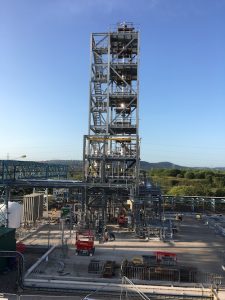Will 152a cost more than 134a and 227?
When we set out, we wanted to ensure that the new propellant to be very similar in price to the existing 134a and 227. It was important to us not to have cost inflation because if we’re committed to delivering sustainability, then pushing the price up to patients doesn’t work. Where we’ve ended up is that a 152a device will be about the same price as a 134a device is today.
In the future, 152a itself will almost certainly be less expensive than 134a. It’s increasingly likely that the environmental regulators in Europe will look at the upcoming 2022 F-gas regulation review as a chance to reevaluate the regulatory status of 134a and 227, which today have special status that protects them from the impact of F-gas regulation. That means that market pressure in the form of price increases due to taxation or market access for the higher GWP gases will come into play.
What the environmental regulators are trying to do is make higher polluting solutions less attractive, and certainly we think the cost of industrial 134a and 227 has no choice but to go up. And that price rise will have no choice but to flow down through the pharmaceutical market, and if the protections that currently are given to MDIs end up being watered down or removed, that price flow will have no choice but to come through to the MDI application.
How will the transition to 152a compare to the previous transition to 134a?
With the transition from CFCs to 134a, the regulation moved ahead of the technical knowledge of the formulation, and that left the industry with a real challenge in the transition from CFCs to HFCs. At Koura, we said we can’t have our customers exposed to that kind of challenge again. So we have done quite a lot of that legwork in terms of the formulation and the tox testing; we’ve invested in our laboratory capability; we’ve invested in manufacturing capability; we’ve built up our engineering team to help customers do some of the work to look at how 152a could operate in their facilities; and we basically put together an infrastructure that enables customers to work out how they can best go forward with 152a.
What is the current regulatory situation?
At the moment, we’re operating under an IND that was granted by the FDA to do the clinical studies. That IND will come to an end in 2021, and we’ll start the transition to a drug master file; which is expected to be available and finalized in the first quarter of 2022.
Both environmental and pharmaceutical regulators are very interested, and they both think 152a has a space to play in the future. With the FDA, they have a specific route that’s required for a new propellant, so our tox testing work has happened in North America. We have also had direct conversations with the MHRA in the UK, and BfArM in Germany to understand their expectations for any customer going to them to talk about reformulating an MDI. For some of the simpler MDI formulations, it’s probably going to be a relatively short and simple regulatory approval process because even though the MDI propellant is a big proportion of the device, it is still an excipient.
We have also worked with environmental regulators and stakeholders to minimize the risk of premature or poorly-worded regulation that could impact our customers and our supply chain. Regulation aimed at the industrial use of fluorinated chemicals such as 152a could be worded inappropriately in a way that would create an issue for our MDI customers, so we’ve been working very carefully to ensure that hasn’t happened.



